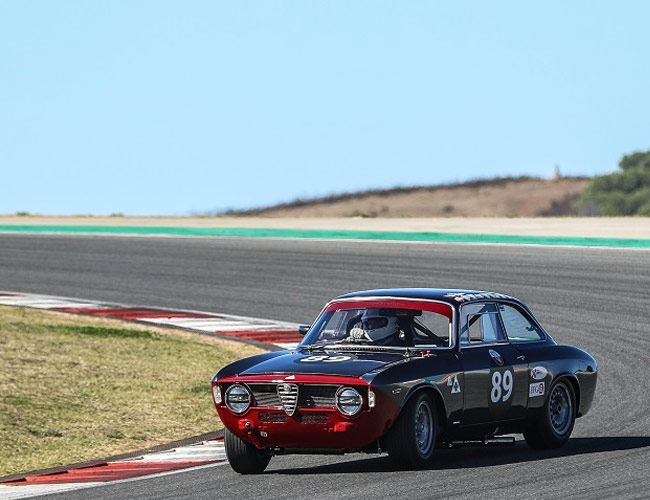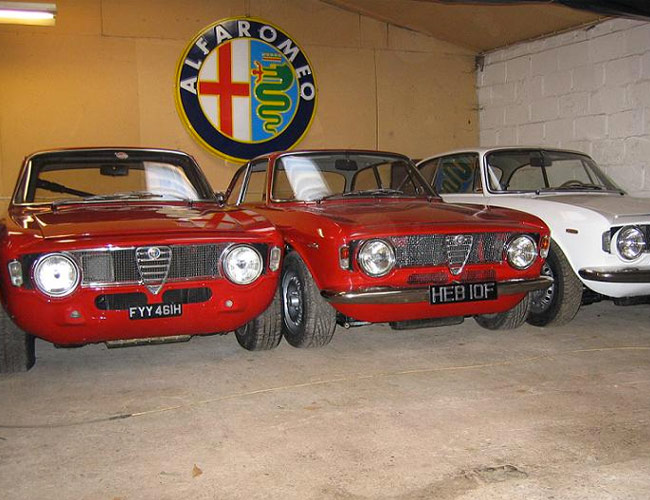Resto-modification: Also known as resto-modding, this is the practice of modernizing an older car with an updated engine, suspension, brakes and other parts while generally keeping the car appear as stock as possible.
So many great classic cars have been overshadowed by the hype for classic Porsche 911s. The valuation bubble that older 911s have enjoyed recently is so expansive that even lesser Porsches like the 912 and 914 have even seen a slight uptick in values, purely due to proximity to Porche’s flagship sports car. And though 911 prices have stabilized somewhat, there’s no denying the rear-engined sports car’s consistently meteoric rise in popularity over the last couple decades. When that popularity seemed to reach terminal velocity, Singer Vehicle Design, the famous 911 re-imagination firm, came onto the scene and experienced equally impressive growth in reputation and notoriety. Like the 911 did to other incredibly capable cars of the same era, Singer’s resto-mod operation stole the spotlight away from other small-batch wrench works — most notably, Alfaholics and its Alfa Romeo-based GTA-R.

The GTA-R, however, is just the tip of the Alfaholic iceberg. The company was officially founded in 2000, but its spirit, dedication and love for the little Italian cars have been gestating for nearly half a century. It really started in 1977 when Richard Banks wanted to go racing in Alfa Romeo’s then-new 2.0-liter GTV, so he bought one. Banks loved the car so much — the way it handled, the way it was balanced — that he purchased a used 2000 GTV and fixed it up. But, as his son Max Banks puts it, his dad “was a cash-strapped race team owner trying to find money. He put the car in the Sunday papers and it sold almost immediately.” Richard Banks found his funding: in trading fixing and Alfa Romeos.
Through the ‘80s and ‘90s Richard put his knowledge of Alfa Romeo cars to use restoring old Alfas, in an unconventional way. He became one of the most prominent Alfa Romeo restorers in the U.K, but not because clients came to him. Max said his father “tried that, never liked the constraints of what one person may or may not want to do with their car. He liked to control his restorations and get the quality exactly where he wanted it to be and make the cars perfect.” So Richard Banks went out and bought other cars, then restored them and flipped them. But due to the economic downturn in the early ’90s, Alfa values plummeted and put the restoration business to the test. After Banks realized it wasn’t viable anymore, he dialed back on restoring cars and focused his energy and knowledge into providing parts as a mail-order outfit for Alfa owners the world over. That’s when the Alfaholics name became official.
Richard never stopped building, restoring and racing Alfas for himself. In 1996 Richard fixed himself up a Sprint GT, modified it to look like a GTA — as the first car built under the new mail-order parts company, he called it an Alfaholics GTA replica. As Max recalls, “it was number one. It was the first time we took a Sprint GT with all aluminum boot, bonnet and doors, [and] put all the GTA grilles and panels on it. We called it the Alfaholics GTA replica. And that’s how we raced it.” At that time, Max’s problem was, since he’s the younger of the two sons, that first car was more his older brother Andrew’s simply because he was old enough to drive it and race it.
“The phones kept ringing and ringing. I then realized I had to turn the whole business back full-circle and go back to what my dad was doing in the ‘80s: start up the restoration shop.”
It wasn’t until Max turned 18 and the prospect of owning his own rebuilt Alfa became too enticing. He decided to tap into the Banks family resources for his own personal enjoyment (who wouldn’t?). “When I turned 18, I said ‘well, I’d like to do a car,’ except I focused on making it a road-based car. So I took everything we learned from our race car and made a road-based version — trimmed it nicer, trimmed it with leather, trimmed it with refined bits and pieces.” Banks documented the whole build process and put it on the Alfaholics website, getting into the nitty-gritty. He showed in detail how they developed their roll cage and the installation of performance parts. Then he took the car on tour.
Banks made trips to the Nürburgring and Dijon, France, and when he uploaded the videos he quickly built a following. “Pretty soon the phone started ringing, and people told me ‘I want you to build me a car like yours.” The only problem was he was up to his neck in the mail-order business while racing simultaneously. “At the time I didn’t have the capacity to do it, but the phones kept ringing and ringing. I then realized I had to turn the whole business back full-circle and go back to what my dad was doing in the ‘80s: start up the restoration shop.”

Alfaholics continues the mail-order parts business and regular restorations, following the same business model the elder Banks stuck to in the ‘80s and ‘90s. Recently the small-batch Italophile car maker was launched into the international spotlight after introducing the ‘R-line.’ R-line builds are the result of “in excess of 3,000 hours of handcrafted love and attention.” The result is an ‘Alfaholics GTA replica’ resto-mod treatment on an Alfa Romeo Coupe, Ti or Spyder. What Max Banks stresses though is, “we’ve gone about things in a different way than a lot of companies. It’s all been a pure organic growth — there’s never been a sit-down meeting of board members saying “ok, this is what we want to do with the business. This has been a family business that’s grown since the late-’70s. We’ve evolved and adapted, and we’ve ended up coming back full circle.”
“Driving at its very best.”
The Banks family never reached out to journalists when they started the GTA-R program. It was always a side project; there was no time to promote it with the restorations and mail-order parts business. But now Alfaholics has been busy trying to evolve its product and get the GTA-R where it wants to be and, perhaps serendipitously, that coincided with particular publications taking notice. “Dicky Meadon, who we’ve raced against for years said “we’d like to have you as part of our ‘evo Magazine track Car of the Year.’ And then Chris Harris who we’ve also known for years said, ‘it’s about time I drove your car for Top Gear.” Harris, after having driven the GTA-R called it “driving at its very best.”
Banks made a point to say “we’re not just about building the GTA-R. Our real workshop is the parts business, and we restore as many historically significant Alfa Romeo GTAs … as we can.” That’s rare — most resto-modding outfits’ business models revolve around the cars themselves. Maybe that’s secret to the stellar level of quality found in every Alfaholics build not just the GTA-R. For Alfaholics, the love is in each door handle, carburetor, manifold and every nut and bolt holding them together — the whole is equal to the sum of its parts, and it’s all the better for it.
Every major modern car-making country has a calling card. For Britain, it’s the low-volume, lightweight sports cars. Read the Story


